
15 Life on Land (152)
Protect, restore and promote sustainable use of terrestrial ecosystems, sustainably manage forests, combat desertification, and halt and reverse land degradation and halt biodiversity loss
 Oct. 24 - 31, everybody is encouraged to learn about bats and get involved in their conservation. National Park Service
Oct. 24 - 31, everybody is encouraged to learn about bats and get involved in their conservation. National Park Service
An excellent time to celebrate bats
ASHEVILLE — Last year, the public was invited to “Bats N Brews” in honor of Bat Week at Sierra Nevada Brewing Company. This year we have not heard yet of any event to celebrate bat week in the southern Appalachians. Who will step up this year? Please let us know of any related activities. Or at least celebrate with family and friends. This article includes great recipes, too.
Bat Week is an international, annual celebration designed to raise awareness about the need for bat conservation. Bats are vital to the health of our natural world and economy. Although we may not always see them, bats are hard at work all around the world each night — eating tons of insects, pollinating flowers, and spreading seeds that grow new plants and trees.
Tennessee Project Milkweed orders top 300,000 and exhaust the free supply. TDOT says there’s more to come.
Written by Hellbender Press Monarch butterfly feeding off milkweed. TDOT launched a program to promote milkweed production, a common source of food for butterflies, birds and other insects.
Monarch butterfly feeding off milkweed. TDOT launched a program to promote milkweed production, a common source of food for butterflies, birds and other insects.
Free milkweed seed will help citizens restore landscapes and preserve habitat; orders commence again in June for popular TDOT project
NASHVILLE — Amid unprecedented citizen demand, the Tennessee Department of Transportation (TDOT) halted online orders for free milkweed seed, offered as part of its Project Milkweed. Launched in June 2023, this mail-order resource was aimed at restoring landscapes and preserving habitats for monarch butterflies and other pollinator species. Since June, TDOT has taken nearly 131,000 individual orders from Tennesseans for milkweed seed. In total, 779,601 red and common milkweed seed packets were requested. The program will return in June 2024.
“TDOT is happy to offer such a popular program to the public, and to empower Tennesseans to do their part in saving pollinators as they are vital to life, growing food, and the economy of Tennessee,” said TDOT Commissioner Butch Eley in a release.
Orders exhausted a stock of 300,000 milkweed seed packets by Sept. 30. Additional seed material has been ordered and is expected to arrive in October. All remaining orders will be fulfilled then, according to TDOT.
Butterfly release scratched at UT Arboretum festival after pushback on ecological wisdom
Written by Thomas Fraser Come join the fun at the annual UT Arboretum Society Butterfly Festival from 10 a.m to 1 p.m on September 9 at the UT Forest Resources AgResearch and Education Center and Arboretum. The event will include educational activities about protecting these pollinators. Photo courtesy University of Tennessee Institute of Agriculture
Come join the fun at the annual UT Arboretum Society Butterfly Festival from 10 a.m to 1 p.m on September 9 at the UT Forest Resources AgResearch and Education Center and Arboretum. The event will include educational activities about protecting these pollinators. Photo courtesy University of Tennessee Institute of Agriculture
UT grounds planned butterfly release but festival will fly
OAK RIDGE — The University of Tennessee Arboretum canceled a planned release of painted butterflies originally scheduled for its upcoming annual butterfly festival, but the pollinator-positive educational event will go on to the joy of families and nature enthusiasts across East Tennessee.
“While the fun-filled and educational event is still scheduled for Sept. 9, a mass release of painted lady butterflies is no longer scheduled as part of the event,” according to the UT Arboretum Society.
The 8th annual festival will occur from 10 a.m. to 1 p.m. at the UT Forest Resources AgResearch and Education Center and Arboretum, 901 S. Illinois Avenue, Oak Ridge. Plenty of activities will provide educational opportunities for the public to learn how we can all protect our pollinators, according to the UT Institute of Agriculture.
“The butterfly species previously planned for release at the festival was the painted lady, Vanessa carduii. Butterfly releases have been held at past festivals with the intention that the more people understand an organism, the more they are inspired to help protect it. Though there has not been definitive scientific research about the impact of painted lady butterfly releases, the UT Arboretum Society has decided to join many other scientific organizations, such as the North American Butterfly Association and the Smithsonian Institute, in not promoting this practice,” according to a release.
- ut arboretum
- tennessee naturscapes
- north american butterfly association
- ut arboretum society
- butterfly festival
- painted butterfly
- ut institute of agriculture
- oak ridge arboretum
- butterfly
- ut butterfly festival
- butterfly release bad
- nature for kids
- things to do around knoxville september 9
- teach kids about nature knoxville
- vanessa carduii
- donna edwards
- stephen lyn bales
- laura russo
 Cynthia Maples, the head beekeeper at Zoo Knoxville, checks out her buzzing charges. JJ Stambaugh
Cynthia Maples, the head beekeeper at Zoo Knoxville, checks out her buzzing charges. JJ Stambaugh
With no clear cause, after two decades beekeepers across North America report losing up to 90 percent of their hives.
Although the alarming losses of the 2006-7 season have not repeated, since then, experts consistently track higher than normal winter losses among honeybee colonies, according to the U.S. Environmental Protection Agency (EPA).
A survey by the University of Maryland University of Maryland found 40% of US honeybee colonies died between April 2018 and April 2019.
While most Americans associate the insects with one of humankind’s oldest sweet treats - honey - they might not realize honeybees are actually an invasive species that can end up competing for resources with indigenous “pollinators” such as bumblebees.
“Worldwide, there are over 20,000 species of bees,” said Cynthia Maples, the lead beekeeper and apiarist at Zoo Knoxville. “About 265 of those are bumble bees. In North America, there are 46 bumblebee species. In the southeast, we have about 15 bumble species with at least six of those in decline.”
Maples explained all bees are part of the order Hymenoptera, which also includes ants and wasps.
“Native pollinators would classify as those species naturally occurring in a particular area, not introduced. Honeybees are technically an invasive species to North America. They were brought over from Europe by humans,” she said.
“In the past few years the narrative has made a switch from keeping honeybees to help native pollinators to the realization that honeybees may be stealing resources from native pollinators,” she continued. “Honeybees are still very important as agricultural pollinators, but protecting native pollinators is also very important.”
While Maples doesn’t know if local bee populations are on the ropes, she said the Xerces Society for Invertebrate Conservation (an international nonprofit group) has formed regional “community science groups” as part of a widespread effort to track bumblebee species.
“It’s really hard to say specifically if there has been a decline in local insect populations since insects are very difficult to track,” she said. “I took part in the training for the southeast bumble bee atlas earlier this year. The hope is that this atlas will give scientists a better idea of population numbers.”
It’s important that scientists understand any threats to the health of the world’s bee populations as the insects are vital to humankind’s ability to survive.
Bees — both domesticated and wild — are responsible for pollinating 71 of the 100 crop species that provide 90 percent of the global food supply, according to experts from greentumble.
Without bees, for instance, there would be no apples, avocados, onions, cucumbers, oranges or almonds.
“Pollination is defined as the act of transferring pollen grains from the male anther of a flower to the female stigma,” Maples explained. “When bees go from flower to flower collecting pollen, they are also depositing pollen grains onto the flowers, thus pollinating them. Not all plants rely on insects to reproduce; for example, some are wind pollinated.”
“The bees benefit because nectar and pollen are their food source. Nectar is an energy source and pollen is a protein source for them. Many agricultural plants are pollinated by bees, hence their importance for us. Roughly one in three bites of food are pollinated by bees, plus another 25 percent of animal feed stuffs. Almonds are 100 percent honeybee pollinated.”
It’s not entirely clear why bee populations appear to be shrinking, but Maples said there’s no shortage of possible explanations.
“As with many species in decline, there are a number of reasons behind it,” she said. “Habitat loss is a big one. Our culture has taught us that we should have pristine lawns without ‘weeds,’ but letting your yard — even in part — grow wild would be a huge step in creating more resources for pollinators. Dandelions and clover can be a haven for pollinators.”
Poisons used to control unwanted animals and insects are another factor.
“Pesticides have a huge impact as well, especially though containing neonicotinoids,” she said. “Pesticides rarely distinguish between beneficial invertebrates and those that cause harm.”
This summer’s historic heatwaves in the Northern Hemisphere may also be playing a role, but Maples cautioned that it’s too early to know for certain what the impact is.
“Climate change may also be playing a role,” she explained. “It isn’t clear if bumblebees are adapting to changing temperatures within their normal ranges.”
Those interested in helping researchers to track bee populations can go to Xerces and learn about taking part in one of the organization’s community science groups.
Do bees really have knees? And more on the idiom.
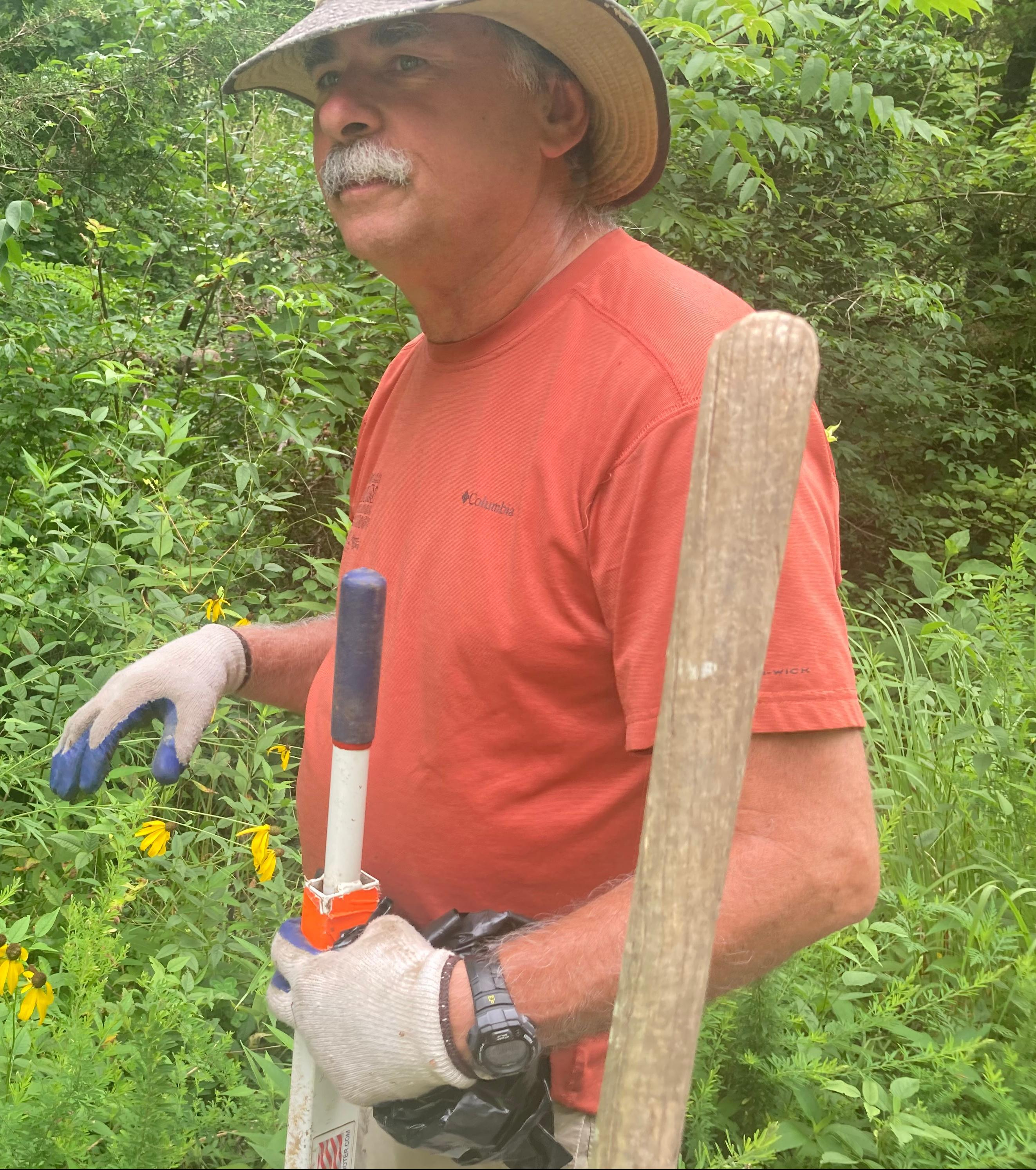 Jimmy Groton, a Tennessee Citizens for Wilderness Planning board member, clears invasive plants at Worthington Cemetery in Oak Ridge during a volunteer work party in July. Ben Pounds/Hellbender Press
Jimmy Groton, a Tennessee Citizens for Wilderness Planning board member, clears invasive plants at Worthington Cemetery in Oak Ridge during a volunteer work party in July. Ben Pounds/Hellbender Press
Volunteers nurture life in an Oak Ridge cemetery
OAK RIDGE — The northern corner here is a small place teeming with treasures, including the Worthington Cemetery Ecological Study Area.
Elza Gate Park off Oak Ridge Turnpike, also known as Tennessee Highway 95, is the starting point for walking trails taking visitors through a cedar barren, a somewhat open habitat including eastern red cedars. The barrens include plants more similar to a prairie than many East Tennessee forests. The trail reaches a cemetery dating before the founding of Oak Ridge.
Woven together in this small area there is a natural mix of wildlife and historical preservation. Visitors to the loop trail will encounter a pine forest and a wetland area complete with a boardwalk to observe birds. Tennessee Valley Authority designated the land as both an Ecological Study Area and Small Wild Area.
- elza gate park
- oak ridge
- tennessee valley authority
- samuel worthington
- global ecology and conservation
- tennessee citizens for wilderness planning
- jimmy groton
- melton hill lake
- nature conservancy
- worthington cemetery ecological study area
- tva oak ridge
- twra
- red cedar barren
- tennessee prairie
- invasive plant control
- exotic species
- ann hewitt worthington
- citizen pest plant control
Opposition mounts to Pisgah/Nantahala national forest management plans
ASHEVILLE — An alliance of conservation groups notified the U.S. Forest Service of its intent to sue the federal department unless officials fix what it calls glaring deficiencies in the Nantahala-Pisgah Forest Plan.
Potential plaintiffs allege the Forest Service’s management plan for the Nantahala and Pisgah national forests is flawed. They maintain the Forest Service plan favors commercial logging, ignores the best science available, and puts several endangered bat species at risk of extinction.
The endangered species potentially affected are the northern long-eared bat, Indiana bat, Virginia big-eared bat, and the gray bat. Two species that are being considered for the endangered species list — the little brown bat and the tricolored bat — would also be adversely affected.
MountainTrue, its lawyers at the Southern Environmental Law Center, and coalition partners — the Sierra Club, The Wilderness Society, Defenders of Wildlife, and Center for Biological Diversity — sent a 60-day Notice of Intent to Sue (NOI), which is a prerequisite to filing a lawsuit under the Endangered Species Act. The letter alleges the Forest Service relied on inaccurate and incomplete information during the planning process, resulting in a plan that imperils endangered wildlife.
ORNL researchers develop wildlife crossing guards
Written by Stephanie G. Seay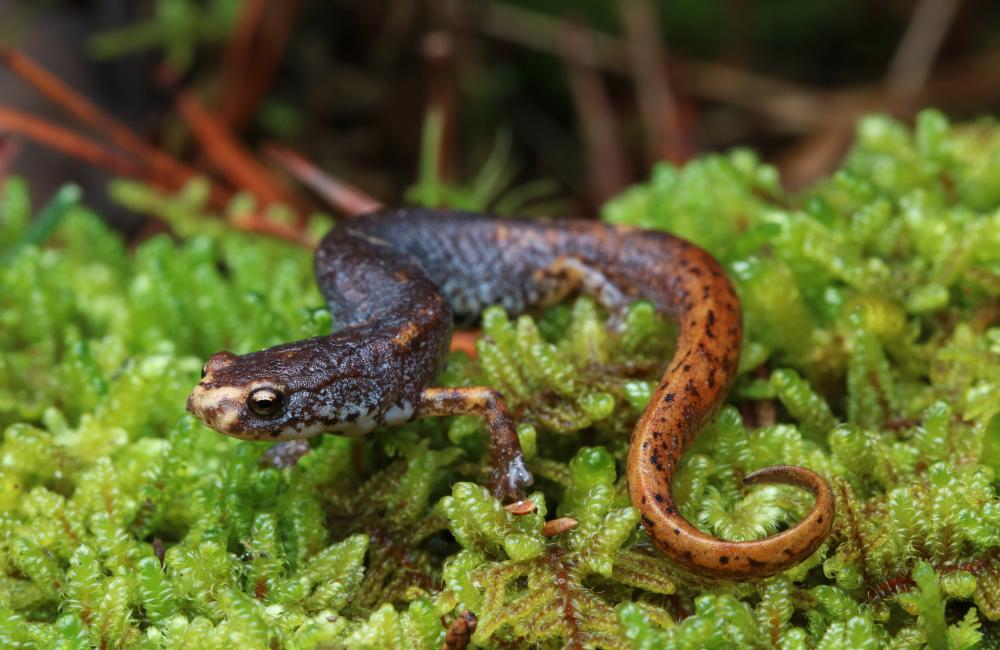 Four-toed salamanders were among the animals included in ORNL research to limit roadkill on the reservation and elsewhere. Bryce Wade/ORNL
Four-toed salamanders were among the animals included in ORNL research to limit roadkill on the reservation and elsewhere. Bryce Wade/ORNL
The 32,000-acre reservation serves as a vast laboratory for wildlife-protection efforts
Stephanie Seay is a senior science writer and communications specialist in the ORNL Communications Division.
OAK RIDGE — Oak Ridge National Laboratory researchers developed a model framework that identifies ways to ensure wildlife can safely navigate their habitats while not unduly affecting infrastructure.
The project centered on the 32,000-acre Oak Ridge Reservation in Tennessee, home to Department of Energy facilities and several at-risk species like the four-toed salamander.
Scientists identified habitats and simulated solutions like conservation buffers and open-bottom culverts to allow safe passage for salamanders and other wildlife, which cost far less than large-scale barrier removal and similarly boost ecological connectivity.
“Development and environmental sustainability don’t have to be at odds,” said ORNL’s Evin Carter. “Our collaborative approach with project managers and engineers shows wildlife management can be an integral part of land-use planning without introducing undue cost or delays.”
ORNL doctoral student Bryce Wade said the model also benefited from 30 years of high-resolution data available because of the reservation’s history and management as a National Environmental Research Park.
How a study of so-called “trash birds” revealed conservation clues for urban species
Written by Rebecca Heisman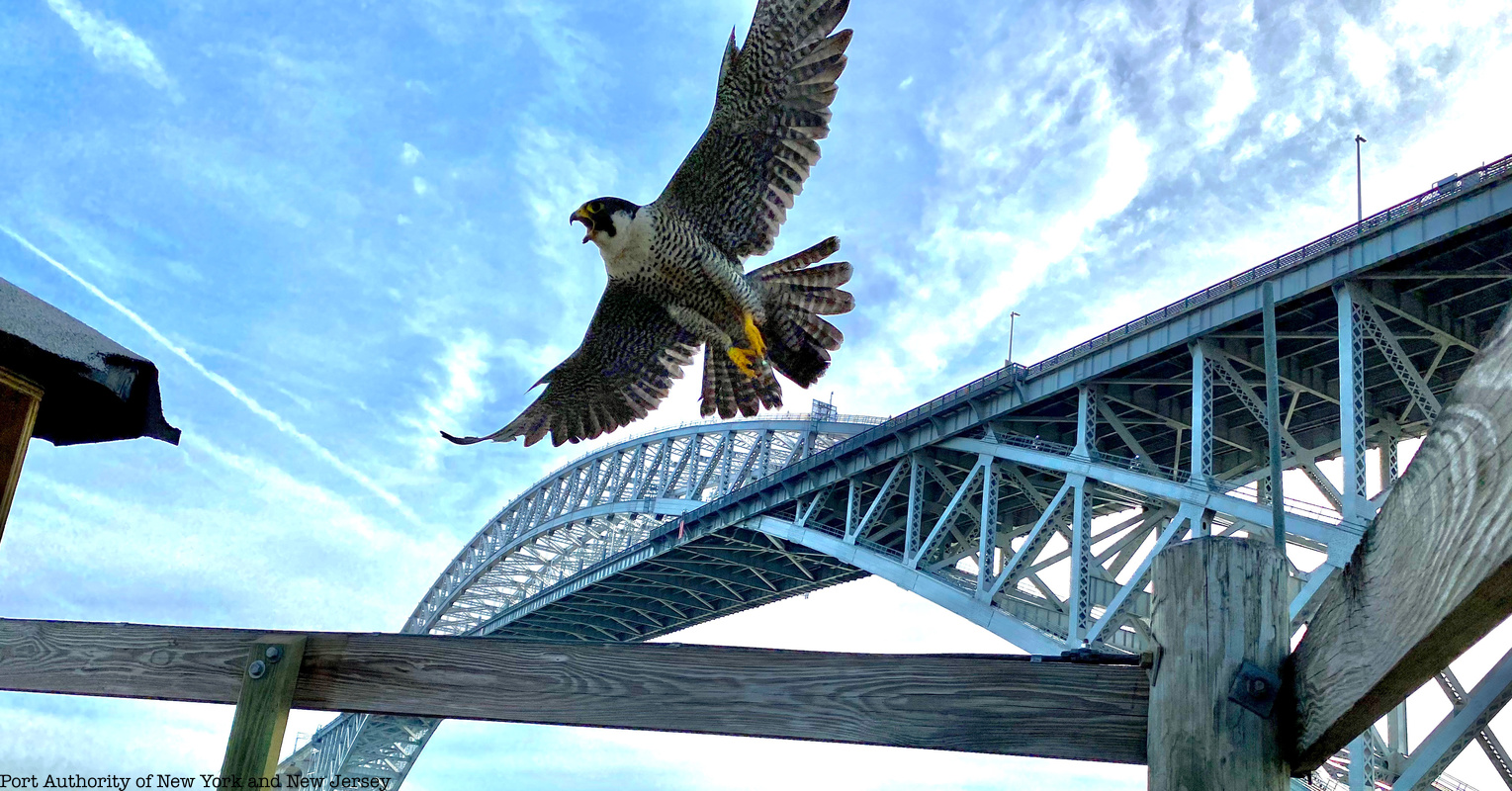 The Port Authority of New York and New Jersey documented a family of peregrine falcons on the Bayonne Bridge. Port Authority
The Port Authority of New York and New Jersey documented a family of peregrine falcons on the Bayonne Bridge. Port Authority
What city birds around the world have in common
This story was originally published by The Revelator.
Why do some bird species seem to flourish alongside humans, eating our crumbs and nesting in our backyards, while others prefer to live as far as possible from dense human populations?
Monte Neate-Clegg began to ponder the question while attending the American Ornithological Society’s 2019 conference in Anchorage, Alaska. “I was staying at an AirBnB and two of the birds I wanted to see in Anchorage, white-winged crossbills and boreal chickadees, were just in the yard,” said Neate-Clegg, at the time a Ph.D. student at the University of Utah. Although new and beautiful to him, the species are common in Anchorage and so omnipresent they’re typically ignored by residents.
“I started thinking, what is it that makes these ‘trash birds’ here, and not elsewhere?”
Neate-Clegg sounds sheepish about using the pejorative-sounding term “trash bird,” but it’s a phrase commonly used by birdwatchers to refer to species ubiquitous to a given location they cease to become interesting and can become irritating. Classic examples include pigeons in city centers and snack-stealing gulls on beaches.
One man’s trash bird is another’s research query. Neate-Clegg wondered if specific traits make certain species more able to thrive in cities around the world. After joining ornithologist Morgan Tingley at his lab at UCLA as a postdoctoral researcher in 2021, he proposed a lab-wide project in an attempt to answer the question.
The research drew on data providing clues which may eventually reveal a roadmap making our cities more bird friendly.
- monte neateclegg
- american ornithological society
- boreal chickadee
- whitewinged crossbill
- morgan tingley
- rebecca heisman
- peregrine falcons nyc
- urban bird
- avonet
- morphology
- functional trait
- ecology
- bird specimen
- ornithology
- natural history
- museum
- trash bird
- big data science
- urban biodiversity
- threatened species
- concrete jungle
- city rewilding
- urban microrewilding
- city bird
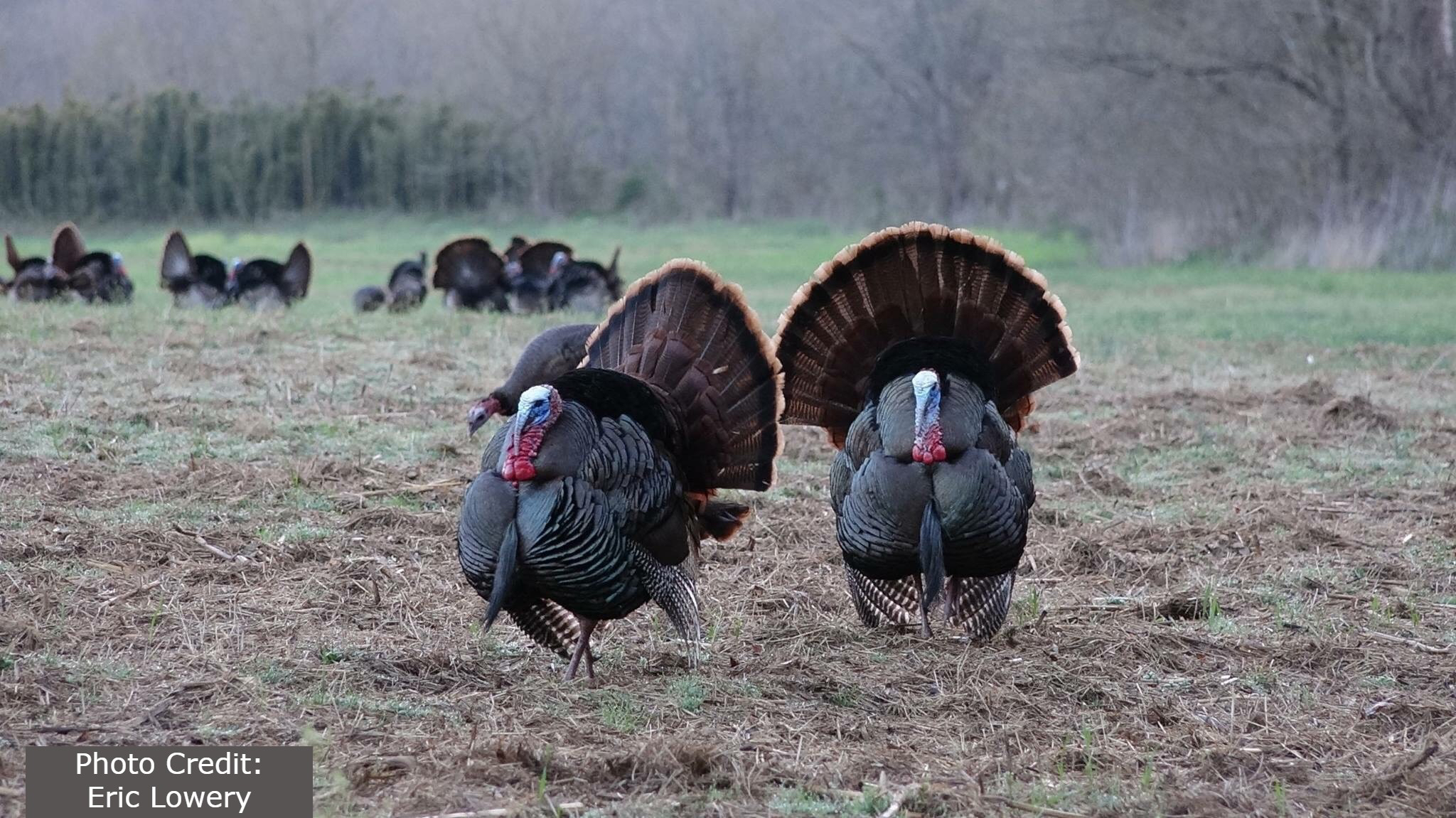 American wild turkey populations have recovered from historic lows. TWRA still needs help managing the modern populations. Courtesy Eric Lowery via Tennessee Wildlife Resources Agency
American wild turkey populations have recovered from historic lows. TWRA still needs help managing the modern populations. Courtesy Eric Lowery via Tennessee Wildlife Resources Agency
TWRA wants you to help build research on USA’s second bird
NASHVILLE — Benjamin Franklin only joked (we think) about making the wild turkey the national bird, but this summer you can help Tennessee with research on the turkey’s national history and renaissance.
Turkeys and bald eagles both grace the state and Southeast and have a notably parallel history of climbing from dire straits nationwide.
The bald eagle became the national symbol on the U.S. seal in 1782.
Declaration of Independence signer Franklin said he would have preferred a different bird. While he may have been joking, he never lobbied for it publicly. His comments in a letter to his daughter, Sarah, have become infamous.
“For my own part I wish the bald eagle had not been chosen as the representative of our country. He is a bird of bad moral character. He does not get his living honestly. You may have seen him perched on some dead tree, where, too lazy to fish for himself, he watches the labour of the fishing hawk; and when that diligent bird has at length taken a fish, and is bearing it to his nest for the support of his mate and young ones, the bald eagle pursues him, and takes it from him … the turkey is in comparison a much more respectable bird, and withal a true original native of America.”
- twra
- twra turkey
- wild turkeys in tennessee
- wild turkeys rebound
- wild turkey survey
- wild turkey rebound
- wild turkey ben franklin
- ben franklin
- bald eagle
- national bird of us
- tennesse wildlife resources agency
- national bird
- wild turkey population
- bald eagle population
- bald eagle history
- wild turkey history
- stephen bales
- thomas fraser
- ben pounds
Nature is full of sensations and sounds, so David Haskell wrote song books
Written by Ray Zimmerman
In Hellbender Press interview, heralded writer describes the way natural sounds shape our world
David George Haskell encourages you to pay attention to the sounds of the natural world.
It’s what led him to write four books; two have been finalists for the Pulitzer Prize, including his latest book, “Sounds Wild and Broken: Sonic Marvels, Evolution’s Creativity, and the Crisis of Sensory Extinction.”
A link on Haskell’s website provides a gateway into natural sounds he describes in the book through the essay “The Voices of Birds and the Language of Belonging.” Visitors to this essay’s page can read the piece or listen to a recording of Haskell reading it, accompanied by recorded bird songs providing a soundtrack for the topic.
Haskell is fascinated by sound. His dissertation, written in the 1990s, was a study of bird sounds. Predators hunt birds largely by ear, which has influenced the evolution of birdsong. His writing is a powerful and beautiful way to understand our relationships with the world through bird sounds.
More...
Help protect an Oak Ridge graveyard dedicated to the study of life
OAK RIDGE — Tennessee Citizens for Wilderness Planning will for the second year host a group of volunteers from Transformation Church on July 15 at the Worthington Cemetery Ecological Study Area to remove Dahurian buckthorn and other invasive species. This is the second year of help at the site from church members, and is one of several service projects church members will conduct throughout the Knoxville area. Volunteers will also help pick up litter and do some trail work.
Additional volunteers are needed to work with the Transformation Church group. We’ll meet at Elza Gate Park in Oak Ridge at 10 a.m. and plan to work until 2 p.m.; a pizza lunch will be provided. Bring bug spray and loppers and/or clippers, and wear sturdy shoes and clothing. Minors will need a parent’s/guardian’s signature on a waiver form (to be provided) in order to participate. For additional information, contact Jimmy Groton at This email address is being protected from spambots. You need JavaScript enabled to view it..
— Tennessee Citizens for Wilderness Planning
Tennessee Aquarium wants to up the pollination game
Written by Casey Phillips Pollinator Pathway signs on the Tennessee Aquarium Plaza in Chattanooga lead guests on a self-guided tour highlighting native plants, pollinator behaviors, and unusual pollinators. Courtesy Tennessee Aquarium
Pollinator Pathway signs on the Tennessee Aquarium Plaza in Chattanooga lead guests on a self-guided tour highlighting native plants, pollinator behaviors, and unusual pollinators. Courtesy Tennessee Aquarium
TDOT joins with Tennessee Aquarium to pollinate our pathways
CHATTANOOGA — With their distinctive orange and black patterns, gossamer wings and harrowing 3,000-mile migrations, few insects are as charismatic or beloved as the monarch butterfly.
Just imagine how tragic it would be if they disappeared.
So it was with alarm in 2022 that the world received news that the International Union for Conservation of Nature (IUCN) had declared the monarch an endangered species, citing population numbers that had fallen 80 percent since the 1980s.
Similar anxiety met reports in the mid-2000s of colony collapse disorder. This sudden phenomenon dramatically imperiled the survival of European honey bees, whose activity directly or indirectly affects roughly one of every three bites of food we eat, according to the U.S. Department of Agriculture.
Pollinators are undoubtedly critically important to plants and humans alike, whether they’re investigating our Irises, calling on our Columbine, or buzzing our Blueberry bushes. This week, June 19-25, the world celebrates Pollinator Week, which recognizes the wondrous, vital contributions of butterflies, bees, moths, bats, and other pollinators.
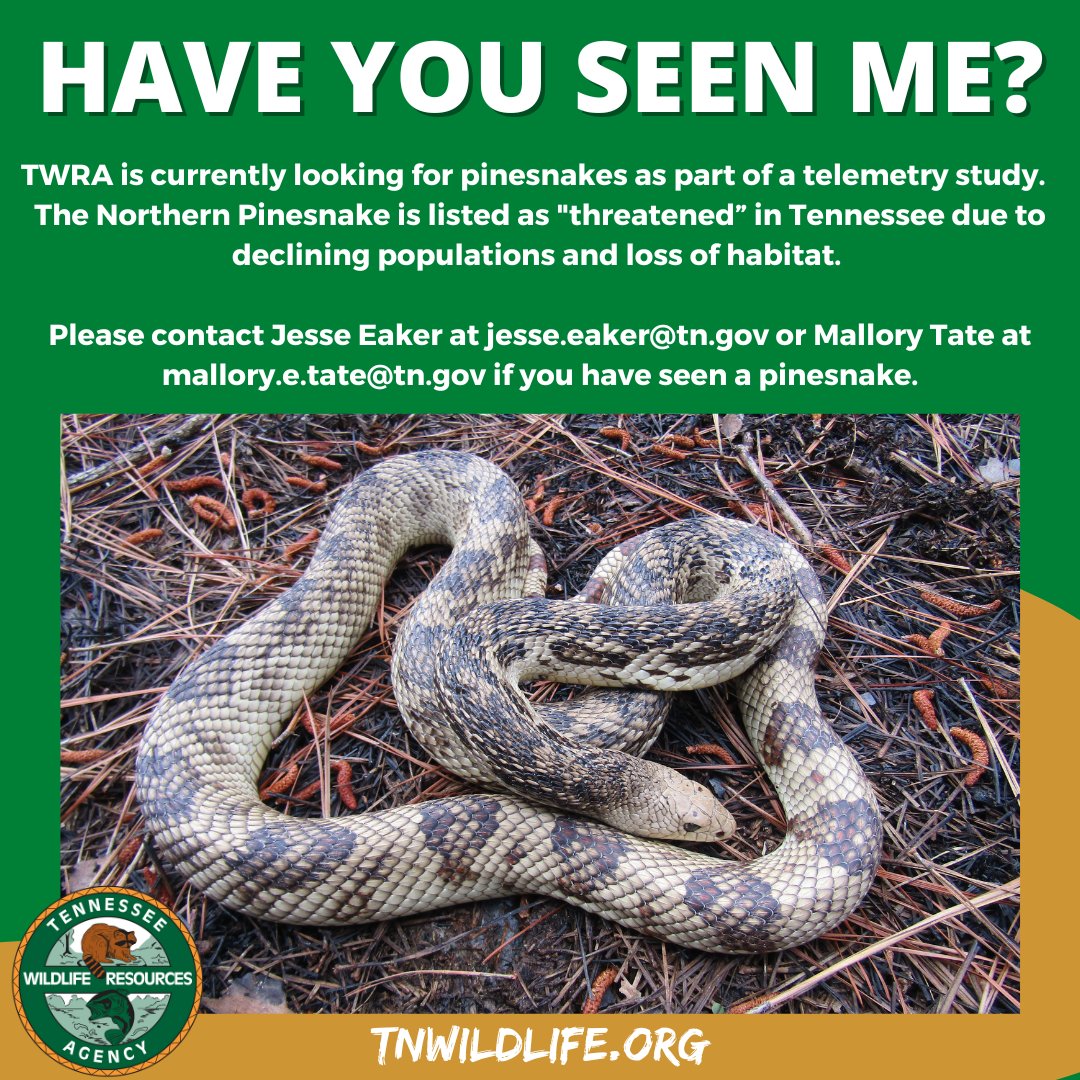
Help TWRA save our pine snakes
NASHVILLE — If you see a vanishing northern pine snake, biologists with the Tennessee Wildlife Resources Agency (TWRA) want to know.
One subspecies of the pine snake, (Pituophis melanoleucus melanoleucus), lives in Tennessee. The snake is considered “threatened” by TWRA due to habitat loss and fragmentation, road mortality, and humans who kill the snakes because they mistake them for timber rattlesnakes.
Brian Flock, biodiversity coordinator for TWRA, said the reports will help the agency find out about the threatened snakes’ habitat and behavior.
“For years we’ve tried to find them. Because of their secretive nature, they’re hard to find,” he said. “We don’t know in Tennessee where they live, how they move around, those kinds of things.” He said they mostly seem to exist in West Tennessee but have been spotted as far east as Knoxville. TWRA, he said, may use the public’s information to add radio tracking devices to the snakes.
Quaff some brews and pour some out on Endangered Species Day
 Barrens topminnow (Fundulus julisia) at Conservation Fisheries, a native stream fish breeding center. This species is endangered (IUCN). It is only found in the Barrens Plateau in middle Tennessee, making it one of the rarest fish in eastern North America. © Joel Sartore 2023
Barrens topminnow (Fundulus julisia) at Conservation Fisheries, a native stream fish breeding center. This species is endangered (IUCN). It is only found in the Barrens Plateau in middle Tennessee, making it one of the rarest fish in eastern North America. © Joel Sartore 2023
Friday, May 19 is Endangered Species Day. Not just in Knoxville. The U.S. Postal Service is celebrating the 50th anniversary of the Endangered Species Act by releasing a collection of stamps featuring endangered animals and fishes. All 4,000 of the Endangered Species Limited Edition Collector's Sets are already sold out, but other collector items are still available. The fish were photographed by Joel Sartore, a friend of local nonprofit Conservation Fisheries. His National Geographic Photo Ark collection also features boulder darters, which are native to the Elk River in Middle Tennessee and have been federally listed as endangered since 1988.
Here’s another link to the celebration: Endangered Species Day in the Old City.
Join in various festivities, ranging from Riverside Tattoo Flash Day to Pint Night at Merchants of Beer to honor those critters who may not be with us much longer.
